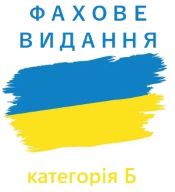The research of the fluid distribution through the pipes of a shell-and-tube heat exchanger when employing different methods of fluid injection into the apparatus and new distribution devices creation
DOI:
https://doi.org/10.31498/2225-6733.38.2019.181285Keywords:
heat exchanger, uniform distribution of heat carrier through pipes, power expense for pumping liquid, distribution devicesAbstract
The results of studies of the inlet pipe location (axial, radial, tangential) influence on the uniform distribution of the heat carrier through the pipes of a shell-and-tube heat exchanger and the energy consumed for pumping the heat carrier are presented. As it becomes apparent from researches, radial and tangential introduction has advantages over axial introduction as to evenness of liquid distribution along the pipes of heat exchanger and power expended on pumping. So, with radial introduction it is possible to attain practically even distribution of heat carrier along the pipes, influencing on such structural features of heat exchanger, as correlation of diameters of the inlet pipe and the lid(Dар/D0 = 4,7). With less diameter of the inlet pipe (Dар/D0 = 7,5) it is possible to attain equalization of the speeds of the heat-carrier in different pipes increasing the relation of the lid height to its diameter (h/Dар); it being necessary to take into account when making heat-exchangers. If these criteria are not adhered to it is necessary to use special distributive devices. With respect to the expense of power, used for pumping liquid it is expended the least with tangential introduction of liquid into the heat exchanger. As to the axial introduction of liquid into the heat exchanger it is impossible to attain even distribution of speeds of heat carrier over the plane of the pipe grate just increasing the diameter of the inlet pipe and the lid height, therefore special distributive devices are required in this case to get even speeds. To adjust the hydraulic resistance over the heat exchanger section it was suggested to use flat insertions with the calculated resistance of the fragments. The necessary resistance was created by drilling out the necessary number of openings, it being determined from Euler equation. Based on the obtained data, an insert design has been proposed, which combines the design features of both a “pipe- in- pipe” type heat exchanger and a shell-and-tube heat exchanger
References
Перелік використаних джерел (ГОСТ):
Kaminski D.A. Introduction to thermal and fluid engineering / D.A. Kaminski, M.K. Jesen. – Johg Willy Sons, Inc. Danvers, 2005. – 783 p.
Валуева Е.П. Оценка теплогидравлической эффективности рекуперативных теплообменных аппаратов / Е.П. Валуева, Т.А. Доморацкая // Теплоенергетика : Сб. науч. тр. Московского энергетического института. – М., 2000. – № 3. – С.43-48.
Клюєв О.І. Оптимізація роботи кожухотрубного теплообмінника шляхом впливу на гідродинаміку потоку : автореф. дис… канд. техн. наук: 05.17.08 / Клюєв Олег Ігоревич. – Херсон, 2006. – 24 с.
Луняка К.В. Створення рівномірного розподілу швидкості руху теплоносія в трубах кожухотрубчастого теплообмінника за допомогою розподільних вставок / К.В. Луняка, О.І. Клюєв, С.А. Русанов // Транспорт, механічна інженерія, експлуатація, матеріалознавство (ТМІЕМ-2017) : матеріали міжнар. наук.-техн. конф. (21-22 вересня 2017 р.; Херсон). – Херсон, 2017. – С. 35-36.
Луняка К.В. Вплив розподільних вставок в кожухотрубчастих теплообмінниках на величину рушійної сили процесів теплообміну / К.В. Луняка, О.І. Клюєв, С.А. Русанов // Холод в енергетиці і на транспорті : тези доп. учасн. IV міжнар. наук.-техн. конф. (12-13 жовтня 2017 р.; Миколаїв). – 2017. – С. 464.
References:
Kaminski D.A., Jesen M.K. Introduction to thermal and fluid engineering. Johg Willy Sons, Inc. Danvers Publ., 2005. 783 p.
Valueva E.P., Domoratskaya T.A. Otsenka teplogidravlicheskoi effektivnosti rekuperativnykh teploobmennykh apparatov [Evaluation of the heat-hydraulic efficiency of recuperative heat exchangers]. Teploenergetika – Heat power engineering, Moscow, 2000, no. 3, pp. 43-48. (Rus.)
Klyuyev O.I. Optimіzatsіia roboti kozhukhotrubnogo teploobmіnnika shliakhom vplivu na gіdrodinamіku potoku. Avtoref. diss. kand. techn. nauk [Optimization of heat exchanges job by influence on hydrodynamics of a flow. Cand. tech. sci. diss. thesis]. Kherson, 2006. 24 p. (Ukr.)
Lunyaka K.V., Klyuev O.I. Rusanov S.A. Stvorennia rіvnomіrnogo rozpodіlu shvidkostі rukhu teplonosіia v trubakh kozhukhotrubchastogo teploobmіnnika za dopomogoiu rozpodіl’nikh vstavok. Materiali Mizhn. nauk.-tehn. konf. «Transport, mekhanіchna іnzhenerіia, ekspluatatsіia, materіaloznavstvo» (TMIEM-2017) [Creation of a uniform distribution of the heat transfer velocity in the pipes of the shell and tubular heat exchanger with the help of distributive inserts. Proceedings of Int. Sci.-Techn. Conf. «Transport, mechanical engineering, operation, material sciences» (TMIEM-2017)]. Kherson, 2017, pp. 35-36. (Ukr.)
Lunyaka K.V., Klyuev O.I., Rusanov S.A. Vpliv rozpodіl’nikh vstavok v kozhukhotrubchastikh teploobmіnnikakh na velichinu rushіinoї sili protsesіv teploobmіnu. Anotatsii IV Mizhn. nauk.-tehn. konf. «Holod v energetytsi i na transporty» [Influence of distribution inserts in shell and tubular heat exchangers on the magnitude of the driving force of heat transfer processes. Abstracts of IV Int. Sci.-Techn. Conf. «Cold in energy and transport»]. Mykolaiv, 2017, p. 464. (Ukr.)
Downloads
How to Cite
Issue
Section
License
The journal «Reporter of the Priazovskyi State Technical University. Section: Technical sciences» is published under the CC BY license (Attribution License).
This license allows for the distribution, editing, modification, and use of the work as a basis for derivative works, even for commercial purposes, provided that proper attribution is given. It is the most flexible of all available licenses and is recommended for maximum dissemination and use of non-restricted materials.
Authors who publish in this journal agree to the following terms:
1. Authors retain the copyright of their work and grant the journal the right of first publication under the terms of the Creative Commons Attribution License (CC BY). This license allows others to freely distribute the published work, provided that proper attribution is given to the original authors and the first publication of the work in this journal is acknowledged.
2. Authors are allowed to enter into separate, additional agreements for non-exclusive distribution of the work in the same form as published in this journal (e.g., depositing it in an institutional repository or including it in a monograph), provided that a reference to the first publication in this journal is maintained.









